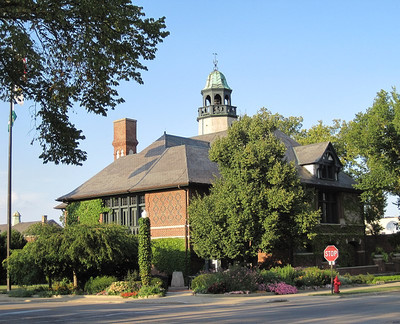Doctor Drain Services in Lake Forest
-
Power Rodding
-
Hydro Jetting
-
Video Inspection
-
Drain Repair
-
Drain Cleaning
-
Sewer Cleaning
-
Sump pump
-
Sewage Ejector Pump
-
Main Line Rodding
-
Bathtub Drain
-
Bathroom Sinks
-
Kitchen Drain
-
Laundry Drain
-
Toilets
-
Floor Drain
-
Storm Drain

Lake Forest is a city located in Lake County, Illinois, United States. Per the 2020 census, the population was 19,367. The city is along the shore of Lake Michigan, and is a part of the Chicago metropolitan area and the North Shore. Lake Forest was founded with Lake Forest College and was laid out as a town in 1857, a stop for travelers making their way south to Chicago. The Lake Forest City Hall, designed by Charles Sumner Frost, was completed in 1898. It originally housed the fire department, the Lake Forest Library, and city offices.
Beginning in the 1950s, Lake Forest's population increased dramatically due to an aggressive program of real estate development and annexation of surrounding areas. While city limits did not originally extend west of Green Bay Road, they gradually expanded. The neighborhood now known as "West Lake Forest" was started as an unincorporated community known as Everett, with many Irish farm workers, who were served by Saint Patrick's Catholic Church. This expansion was not without controversy, as many residents felt that the community was losing its character. Novelist Arthur Meeker Jr., who grew up in West Lake Forest in the early 1900s, considered moving back to his childhood community, but upon visiting in the 1950s "to my dismay I found this region wasn’t really rural anymore. … The Lake Forest of my childhood had all but vanished". Everett was annexed by Lake Forest in 1926, but did not become heavily developed for several decades. In 1988, the community expanded further westward, annexing 682 acres of land surrounding Lake Forest Academy and Conway Farms Golf Club, despite negative reactions from residents. The city government justified the expansion as necessary to prevent unwanted commercial development encroaching the edges of the community.
One of Lake Forest's most notable features is its virgin prairies and other nature preserves. In 1967, a group of 12 long-time residents of Lake Forest formed a land conservation organization, Lake Forest Open Lands Association. Its express purpose was to purchase or otherwise set aside the rapidly disappearing open spaces in the city, in the interests of preserving animal habitat, restoring ecosystems, and providing environmental education for the city's children. In the next 38 years, the group managed to acquire more than 700 acres (2.8 km2) within the city limits, which now form six nature preserves with 12 miles (19 km) of walking trails open to the public.
Preserved in perpetuity are wetlands, original pre-1830 prairie, woodland, and savanna, all within the community. The restoration of these lands is celebrated by an annual "Bagpipes and Bonfire" event in September, which started as a community event in which controlled fires were burned to clear underbrush and preserve the savannah. From an early time, the playing of bagpipes has accompanied the community gathering, as the town had numerous Scots-Irish residents in its early years. This has also been an annual fundraising event for Lake Forest Open Lands Association.
It is home to Gorton Center which originally housed the town's first K-8 school. Gorton is a hub for arts & culture and a multi-faceted community venue. Gorton presents live music, storytelling, children's events, community events and more; has a robust and growing film program; produces and offers classes for youth and adults, including Gorton Drama Studio, theater and acting classes for all ages; houses a children's learning center; houses other nonprofits; provides places for others to rent for their special events and meetings. Designed, built and opened as the Central School in 1901, the original building was designed by James Gamble Rogers and remodeled in 1907 by Howard Van Doren Shaw.
The Ragdale Foundation, an artists' community and residence, is located in Lake Forest. Formerly Howard Van Doren Shaw's summer retreat and built in 1897, the estate has accommodated notable artist Sylvia Shaw Judson.
In 1992, Lake Forest gained national attention when it attempted to ban the sale of offensive music to anyone under the age of 18. City council members used existing ordinances against obscenity—defined in the codes as "morbid interest in nudity, sex or excretion"—to buttress their campaign. Mayor Charles Clarke stated, "If they sell an obscene tape to somebody underage, we will prosecute." The person who came up most frequently in discussions of obscene content was Ice-T, a rapper who has since also performed as an actor.
Lake Forest has been named a Tree City USA by the National Arbor Day Foundation in recognition of its commitment to community forest. As of 2006, Lake Forest had received this national honor for 26 years. The actor Mr. T notably angered the town by cutting down more than 100 oak trees on his estate, in what is now referred to as the "Lake Forest Chain Saw Massacre."

